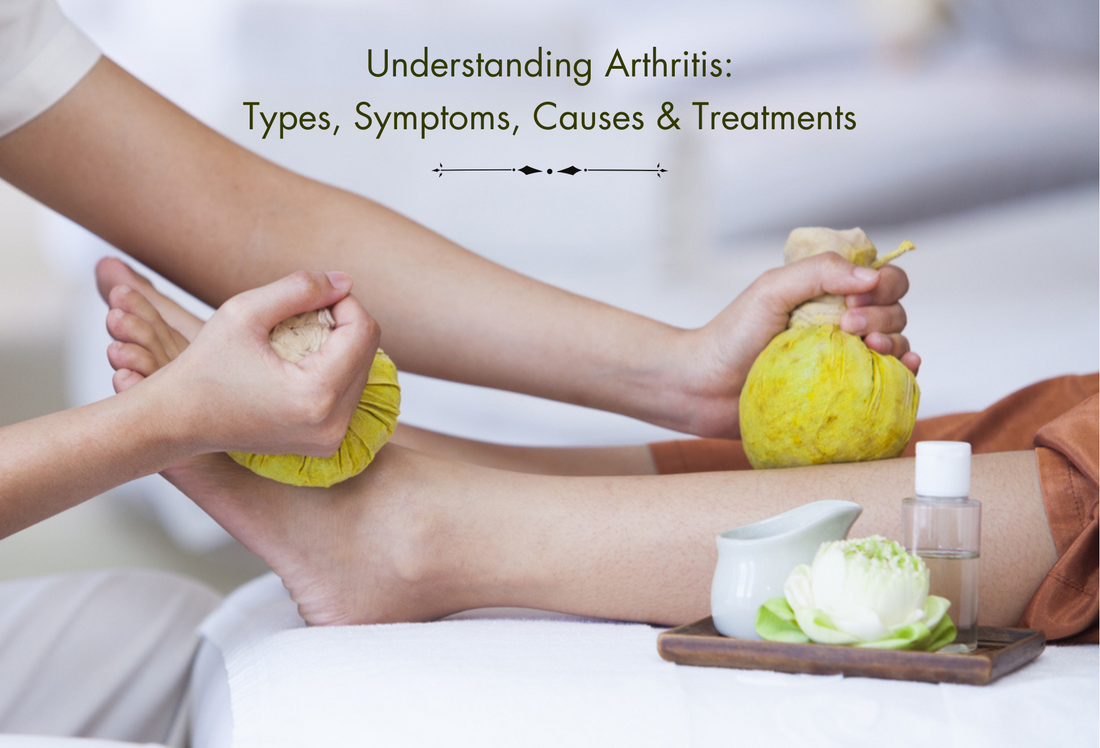
Understanding Arthritis: Types, Symptoms, Causes And Treatments
Introduction
Arthritis is a disorder related to joint pain, stiffness, and swelling. It has a very serious impact on the person suffering from it. It is not only dangerous for health but can also cause a lifetime problem. However, many people do not know about arthritis, and the only question that arises among them is what is arthritis and what are its causes? Do not worry, as this article covers all your doubts regarding the symptoms, causes, and treatments, stating the potential benefits of Ayurvedic pain relief therapy, which is a natural cure for such a life-threatening disorder.
Arthritis Meaning
Pain or discomfort in the joint is referred to as arthritis. There are more than 100 different forms and disorders that are related to arthritis. A recent survey states that people in the US and Canada are more affected by this, irrespective of their age, gender, and race.
Types of Arthritis
While more than 100 types of arthritis and related diseases have been discovered, we will look into some common and well-known among them:
Osteoarthritis
It is the most common type of arthritis. It happens when one of the tissues in the joints that covers the ends of bones becomes very weak over time. This can cause immense pain, swelling, and difficulty in moving the joints.
Rheumatoid arthritis
Joint pain, swelling, and stiffness are common symptoms of rheumatoid arthritis. It is also referred to as an autoimmune disorder. In other words, your body's natural self-defense mechanism, the immune system, becomes confused and begins attacking healthy tissues.
Psoriatic Arthritis
One type of arthritis that causes a skin rash is psoriatic arthritis. It results in thick, damaged fingernails and red, itchy rashes. Either the rash or the arthritic symptoms may appear first. It can result in painful, swollen, and inflamed joints.
Gout
In gout, an inflammatory arthritis, pain, swelling, redness, and tenderness in the joints—typically near the base of the big toe—often come on suddenly and intensely. When particles of urate develop in the joint, it causes irritation.
Ankylosing Spondylitis
Ankylosing spondylitis (AS), an inflammatory disease, may cause some of the vertebrae in your spine to join together. The spine bends forward due to its lack of flexibility.
Arthritis Causes
- Genetic factors: Genetics plays an important role, as many times arthritis is caused by a member of the family, increasing the risk of disease for their children. Certain genetic disorders due to the cause of arthritis include rheumatoid arthritis and lupus.
- Lifestyle Factors: Many lifestyle behaviors can also trigger arthritis, such as Smoking, lack of physical activity, a poor diet, etc. Obesity, for example, puts additional stress on weight-bearing joints, which can lead to osteoarthritis.
- Infections and Immune System Issues: Some types of arthritis are caused by infections or immune system issues. For example, bacterial infections can cause septic arthritis, whereas autoimmune diseases can cause rheumatoid arthritis.
Common Arthritis Symptoms:
Arthritis symptoms vary by type, but they typically include joint pain, stiffness, swelling, redness, and reduced range of motion. Some forms of arthritis can also harm the heart, eyes, lungs, kidneys, and skin.
Diagnosis of arthritis
- Medical History and Physical Examination: A thorough medical history and physical examination are required before making a diagnosis. Your doctor will inquire about your symptoms when they began, and how they impact your daily life.
- Imaging tests: Imaging tests such as X-rays, MRIs, and CT scans can aid in detecting joint damage and determining the severity of the disease. These images may reveal bone erosion, cartilage loss, and other changes.
- Laboratory Tests: Certain kinds of arthritis can be identified by the presence of antibodies and inflammation in the lab. Anti-CCP, ESR, and rheumatoid factor are examples of common blood tests.
Ayurvedic Perspective and Treatment For Arthritis
Health, according to the age-old Indian medical system Ayurveda, is a state of equilibrium between the body, mind, and soul. It highlights how the three doshas—Pitta, Kapha, and Vata—are in harmony. Many people believe that arthritis is a vata disorder because of its painful, stiff, and dry joints. While there is no permanent solution for arthritis, Ayurveda still offers many different ways to manage arthritis, which include herbal remedies, diet and lifestyle changes, and therapy for pain relief. Ayurveda sees any health problem from many angles and offers a total health solution. Panchakarma therapy is one of the best pain relief massages which is considered a total health solution.
Benefits of Ayurvedic Treatment For Arthritis
Ayurvedic treatments are holistic, aiming to address the underlying cause of arthritis rather than just its symptoms. They are natural and typically have fewer side effects than conventional medications.
Conclusion
Effective management and treatment of arthritis depend on a thorough understanding of the disease's many forms. Although conventional therapies offer considerable relief, Ayurvedic pain relief therapy presents a more comprehensive approach that can enhance general health and well-being. By blending the greatest aspects of both worlds, arthritis patients can have a balanced and meaningful existence.
FAQ’s:
- How can you identify the early stages of arthritis?
Early symptoms of arthritis frequently include joint pain, stiffness, and swelling. You may also notice a decrease in range of motion, especially in the morning or after periods of inactivity.
- can arthritis be cured?
Arthritis cannot be completely cured, but its symptoms can be effectively managed through proper treatment and lifestyle changes.
- What methods are used to diagnose arthritis?
Arthritis is diagnosed using a combination of medical history, physical examination, imaging tests (such as X-rays or MRIs), and lab tests to look for inflammation markers or specific antibodies.
- Is swelling a common symptom of arthritis?
Yes, swelling is a common sign of arthritis. Rheumatoid arthritis, osteoarthritis, and psoriatic arthritis are all characterized by joint inflammation.
- Can stress worsen pain and inflammation in arthritis patients?
Stress can worsen arthritis symptoms by causing more inflammation and pain. Stress reduction techniques such as meditation, deep breathing exercises, and yoga can help alleviate arthritis symptoms.

